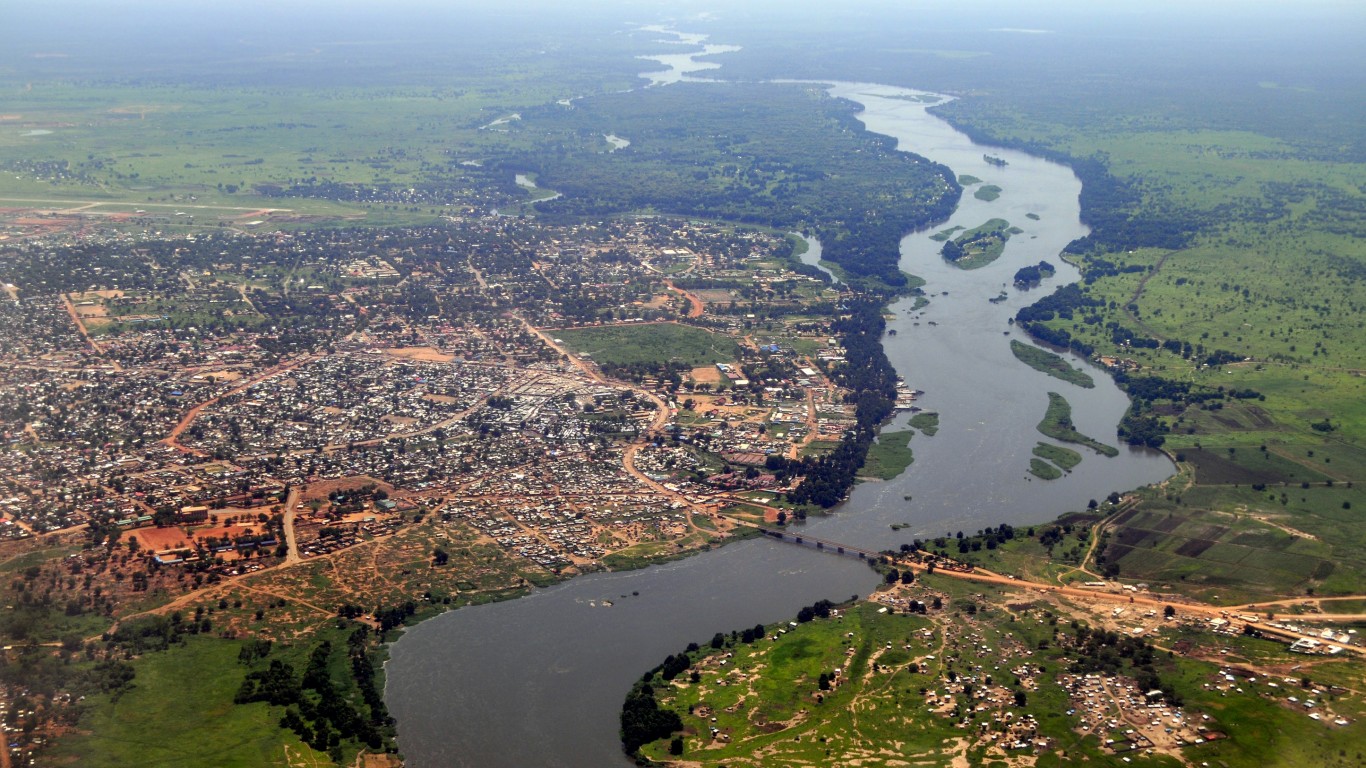
The Nile, the world’s longest river at 4,132 miles, stretches from central Africa to Egypt, where its empties into the Mediterranean Sea. It is the drainage basin for several of Africa’s largest nations, including the Democratic Republic of the Congo, Kenya and Ethiopia. It is both a source of fresh water and a “highway” for transportation by boat.
The Nile has two major tributaries. The White Nile, probably the better known of the two, starts at Lake Victoria, which is located in Tanzania, Kenya and Uganda. The Blue Nile is the other tributary.
Whether the Nile will remain the world’s longest river depends on climate change, which has affected lakes and rivers across the world. The only river that could become longer than the Nile is the Amazon, which is 4,000 miles long. The difference in length between the two rivers is about the same as the distance from New York City to Hartford, Connecticut.
Forecasting the future of the Nile’s length is extremely complex, and any forecast must be inconclusive. For example, the world’s oceans should rise because of global warming. The parts of the world this will affect are subject to speculation. Some of the largest lakes in the West have lost substantial amounts of water. This includes the Great Salt Lake, the largest inland salt lake in the United States. It includes the level of the Colorado River, particularly as it approaches the Hoover Dam, and Lake Mead, which supplies water to much of the areas around it.
The Nile may not lengthen, but it could be a source of terrible flooding. Monsoons in Ethiopia send massive volumes of water downstream to Egypt. The effective level of this water is expected to drop eventually, however, because of climate change. According to QZ.com:
Climate projections suggest that, by the end of the century, the amount of rain in the Upper Nile basin could increase by up to 20%. But our new paper shows that, despite more rainfall, devastating hot and dry spells are projected to become more frequent in the Upper Nile basin.
Additionally, climate events thousands of miles away also will have an effect. The Climate News Network reports:
The Nile flow is affected by the cycle of Pacific temperature oscillations: 2015 was an intense El Niño year, which saw a drought in Egypt. The same oscillation’s obverse, La Niña in 2016, was linked to high flooding.
What will happen to the length and route of the Nile? The only thing certain is that it will change.
Click here to see the 40 longest rivers on earth.
It’s Your Money, Your Future—Own It (sponsor)
Retirement can be daunting, but it doesn’t need to be.
Imagine having an expert in your corner to help you with your financial goals. Someone to help you determine if you’re ahead, behind, or right on track. With SmartAsset, that’s not just a dream—it’s reality. This free tool connects you with pre-screened financial advisors who work in your best interests. It’s quick, it’s easy, so take the leap today and start planning smarter!
Don’t waste another minute; get started right here and help your retirement dreams become a retirement reality.
Thank you for reading! Have some feedback for us?
Contact the 24/7 Wall St. editorial team.




